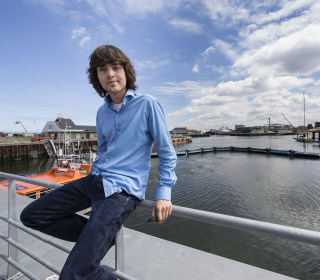And I'm not qualified to say that these wouldn't be workable plans for the niche applications they are suggested for. They might certainly work quite well. Or there might be unanticipated problems. That's the way it always is for something this far out on expanding one particular envelope or another. The two things I would caution on, however, would be these:
1. First and foremost. If we are forced to think in terms of dollar costs to attempt to do what we must attempt to do, we are doomed before we even start. For at the get go of that game is all of the finger pointing as to who will bear that abstract number, of abstract counters.
If, on the other hand, we were to recognize the absolute need to change economic operating systems, we could approach the problem from an entirely new perspective. One that changes the equation from abstract cost to very specific relationships of materials availability, skill availability, and the applicable information we can bring to bear on the problem. Because that's when you start describing what one means by an "effort based economy." One where keeping communities going is our newly redefined work, and the efficiencies we will reap, in getting rid of the marketing, and packaging, that goes with a consumer economy, will give us a great deal of new material supply with which to work with; even with diminishing resources to contend with world wide.
2. Whatever we do decide to do to alter the physical equation, on any kind of large scale, vis a vie a natural environment like the regions around the poles, so as to affect thermal flows in one way, or another, we need to keep something very important in mind. And that is a very simple dictum. If we make a way to dial some counter, or helping, effect up, to keep cold things cold, we also must give serious consideration to being able to dial those effects back down again, in something approaching practical time frames. Which should already be on our minds in any case as we need responsive time frames to be in play at the front end, as well as the back end of this process.
This is also where I have to admit a certain personal bias as I also have an audacious, and I'd like to think, quite innovative, way to perhaps approach these problems. And in my case that relates to my ongoing love affair with lighter than air tech.
I've already explained the Hybrid Dirigible Blimp trains idea a bunch of times, so I won't go into that here, though it is worth mentioning that that type of logistics capability might be a program saver for any, massive polar developmental project; especially one where you do not want to go thrashing about any hard surface, in these delicate ecosystems, anymore than you have to.
No, this is where I rely on the more, I also like to think, elegantly simply, design primitive of a lift doughnut; which is no more than a very big inner tube shape, holding lift gas bladders, and having a carbon fiber tube sock of a thing hanging down from it's inner, circular circumference; say in 150 to 300 meters or so lengths. Simple constructive primitives with which you could build support columns of many kilometers of height. Flying columns in essence if you cross connected a vast forest of them in some kind of unitary, cubic oblong; a great flying shape that could support flexible mats of both solar collectors, and mirrors to reflect sunlight with. Get the entire, massive structures up high enough, in fact, and shroud all of those carbon fiber tube socks, so that they could become cold air heat pipes, bring air down from on high, and you might really be able to keep cold things cold; and do it wherever you, and your clever engineering for making them strong enough, could want them be put. And the result, if it worked of course, would be the essence of both flexible placement, and the ability to dial things back down in some much more relatively short time frames.
The real bottom line here, however, is that a whole host of very audacious, and innovative, actions need to be contemplated if we are to save this planet. And if we stick to a money economy it will never even get started in any sort of proper way. You wait and see. Time will tell on this without any doubt whatsoever.
See Also:
[Post Note: And let's not forget that saving the planet will also require beginning the new Great Migration. J.V.]
HARD ROCK LIFESTYLE
Will We Ever Colonize An Asteroid?
The asteroid belt is rich with precious metals. There are already plans for asteroid mining but could we ever build a colony on one?
TORNADOES, HOWEVER, AREN'T THAT BAD
The Most Expensive Natural Disasters In The US Since 1980, Visualized
One worrying trend is that natural disasters, especially storms, are happening with increasing frequency.





No comments:
Post a Comment